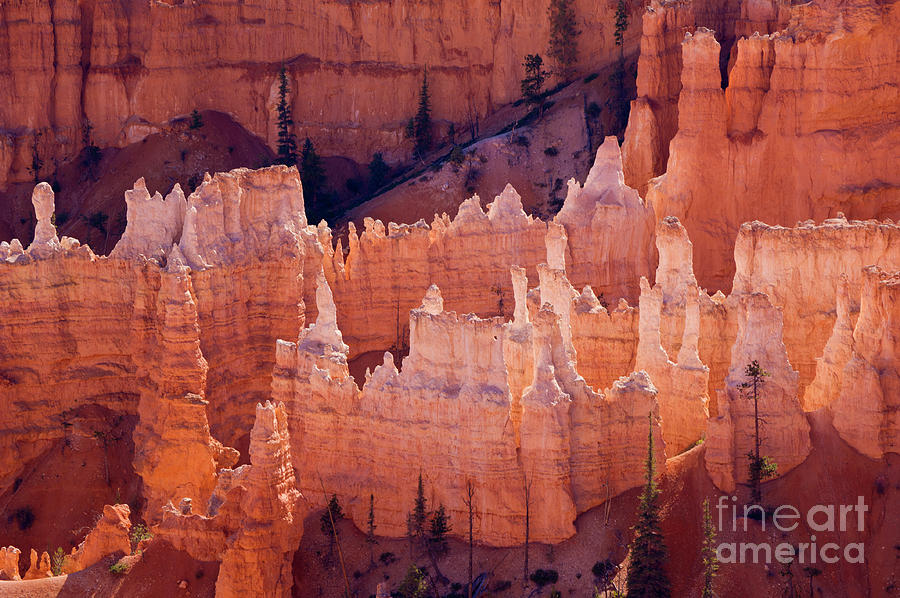
Sandstone Hoodoos, Bryce Canyon Amphitheatre, Utah, USA

by Neale And Judith Clark
Title
Sandstone Hoodoos, Bryce Canyon Amphitheatre, Utah, USA
Artist
Neale And Judith Clark
Medium
Photograph - Photography
Description
Down in Bryce - Bryce Canyon National Park Sandstone Hoodoos Bryce Canyon National Park,translucent fins and Douglas fir trees in Bryce Canyon Amphitheatre Utah USA
Bryce Canyon National Park is an American national park located in southwestern Utah. The major feature of the park is Bryce Canyon, which despite its name, is not a canyon, but a collection of giant natural amphitheaters along the eastern side of the Paunsaugunt Plateau. Bryce is distinctive due to geological structures called hoodoos, formed by frost weathering and stream erosion of the river and lake bed sedimentary rocks. The red, orange, and white colors of the rocks provide spectacular views for park visitors. Bryce Canyon National Park is much smaller, and sits at a much higher elevation than nearby Zion National Park. The rim at Bryce varies from 8,000 to 9,000 feet (2,400 to 2,700 m)
A hoodoo (also called a tent rock, fairy chimney, or earth pyramid) is a tall, thin spire of rock that protrudes from the bottom of an arid drainage basin or badland. Hoodoos typically consist of relatively soft rock topped by harder, less easily eroded stone that protects each column from the elements. They generally form within sedimentary rock and volcanic rock formations.
Hoodoos are found mainly in the desert in dry, hot areas. In common usage, the difference between hoodoos and pinnacles (or spires) is that hoodoos have a variable thickness often described as having a "totem pole-shaped body". A spire, on the other hand, has a smoother profile or uniform thickness that tapers from the ground upward.
Hoodoos range in size from the height of an average human to heights exceeding a 10-story building. Hoodoo shapes are affected by the erosional patterns of alternating hard and softer rock layers. Minerals deposited within different rock types cause hoodoos to have different colors throughout their he
Alamy reference C1JJ0C
Uploaded
February 3rd, 2020
Statistics
Viewed 4,410 Times - Last Visitor from Fairfield, CT on 04/19/2024 at 2:32 PM
Embed
Share
Sales Sheet




































